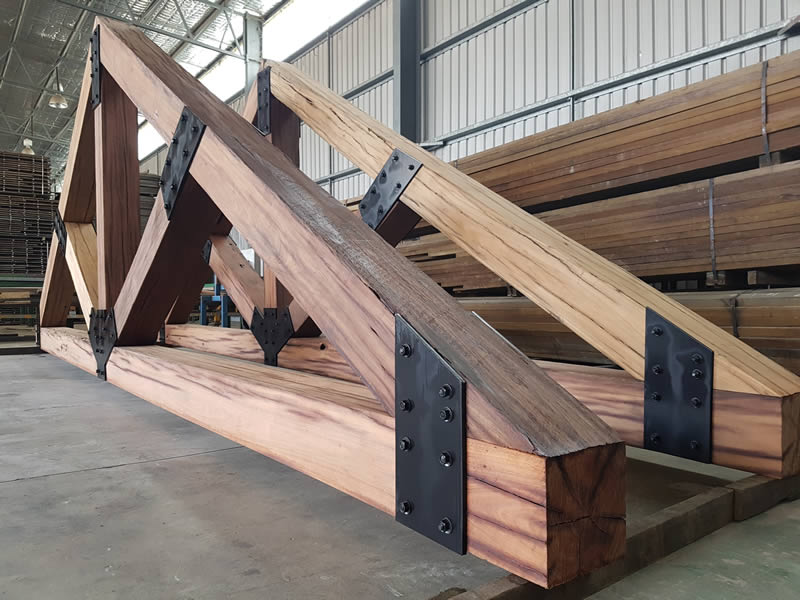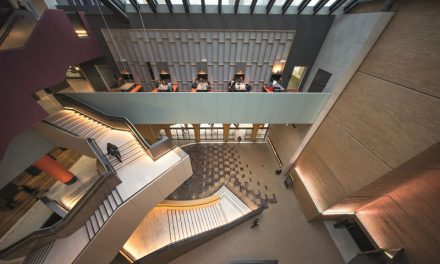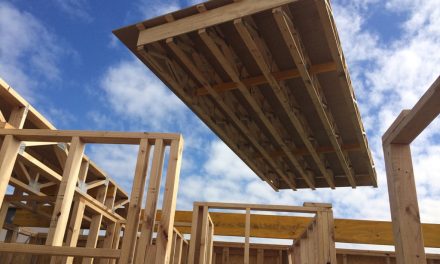Recycled timber is not just good for the environment. Here, we take another look at a beautiful and bountiful resource.
In the July issue of TimberTrader News we looked at the various ecological benefits of using recycled timber. But there are many other benefits to using such a valuable resource that stretch beyond helping our planet.
While the use of recycled timber is increasing, for many there still remains a stigma surrounding it.
“For instance, that it’s full of nails or that it must be chemically treated or preserved,” says Michel Kennedy, founder of Kennedy’s Reclaimed and Sustainable Architectural Timbers (kennedystimbers.com.au). “Also that it’s really hard to work with – hard to nail, cut or build with.
“By and large this is incorrect. If you grab an old piece of wood straight from a building site or off the racks at a demolition yard, yes, it probably would be. But a lot of the timber recyclers out there these days do a lot of processing first, and process it to Australian standards. They’ll mil it and dress it to make it a lot easier for the builder or end user to be able to process.”
This is, in a nutshell what Kennedy’s does. They have a mill, kilns where they dry wood as required, profiling equipment and a joinery operation to make things out of it. And there are a number of other companies who are doing the same thing.
“I guess it’s a matter of people understanding that if they want that sort of application, there are people out there who can provide that finished profile,” Kennedy says.
A more stable product
Old timber has, obviously, been around for a lot longer than new timber. This means that, over the years, it has expanded and contracted many times, making it a more stable product, as the product will experience less movement in the future.
“It will still expand and contract as all timber does, but it won’t do it like an unseasoned bit of timber – cut straight from the forest that hasn’t been kiln dried or profiled,” Kennedy says. “Plus, the trees they cut down these days are smaller and tend to be more regrowth timber, not old growth.”
Old timber used to come from larger trees – old growth timber is slower to grow and slower to mature, so the wood fibre is of a higher grade than regrowth timber.
“So the timber that’s going into build a bridge, for example, 30-40 years ago, will be a higher grade than the timber that is used to go into a bridge these days,” Kennedy explains.
From the source
Kennedy sources his timber from a number of different businesses, including from Gumdale Demolition (gumdaledemolition.com.au). Owner Trevor Lyons has worked with Kennedy’s for many years, providing him with timber from demolished residential housing, industrial sheds and buildings, and old warehouses.
“We will assess the building before demolition, then contact the agent and work out a deal,” he says. “Then our crew recover the materials, grade it, stack it and strip it, and then it’s delivered.”
If the job is a particularly large one, Lyons will call on an expert like Kennedy to appraise the materials.
Once the recovered timber is delivered to Kennedy’s, the timber is processed.
“When a piece of old timber comes to us, we examine it to see if there is any chemical or paint treatment on it. Firstly by visual assessment, and if there is evidence that it has been, we’ll test it with a reader that reads the chemical penetration in the timber and then assess if it’s good to be recycled. If it’s too heavily treated it goes straight to landfill.
“Then we’ll have it de-nailed and metal detected so we can remove all the metal from it. Then we’ll grade it into a species or a colour. We visually grade it – you cut a little bit to look at the cell structure under a microscope.
The timber is then put it in to strip and be kiln dried or it may be suitable to use straightaway.
“All our timber is graded to industry standards for recycled timber,” Kennedy says. “You can use it for a whole range of applications – commercial projects, fitting out offices, retails and shop fitouts and residential projects.”
Spreading the world
Eli Conroy, architect and builder from Built by Eli, Newcastle NSW (builtbyeli.com.au) loves to work with recycled timber
“Some clients ask for recycled timber up front – a lot more than five years ago,” he says. “But sometimes I will suggest it– mainly for the ecological advantages but also because it’s more stable. It stays the same size and often has more feature to it, such as old bolt holes that can be used as part of a design.”
Conroy will usually use a combination of old and new timbers, as using old hardwood for such things as framework and stud walls would be too costly.
“A lot of people think recycling timber is just taking it straight from an old house into a new house, but it’s redressed, processed, graded,” he says. “It’s not hard to work with – if it’s milled properly it’s easier to work with.”
Conroy believes that the timber industry needs to do more to promote the use of recycled timber as a viable resource,
“We need more suppliers, and those suppliers need more suppliers, so to speak,” he says.
Mark Williams, architect and builder from Mark Williams Architects (mwaarchitects.com.au) is another fan of the resource.
“I love working with recycled timber – reusing repurposed timber rather than cutting down new trees,” he says. “I’ve always had a bit of a bent towards using recycled materials.”
Williams is currently building a house with recycled shiplap cladding.
“If you build something with recycled timber, it stands out – it’s not ‘common’,” he says. “The house I’m building at the moment is in an area where there is a lot of brick residential and project homes. You start using a very different material and everyone notices it. Also, the house overlooks a gully with lots of trees, and the timber complements the surroundings.
“People think that using recycled timber takes more work, and it can, unless you have a good supplier who can provide already repurposed timber. It’s all about knowing how to use it.”
Williams also wants the industry to help promote recycled timber to the public, to raise awareness – not just of the environmental benefits, but the aesthetic benefits also.
“If you use recycled timber your house will develop its own character – it’s individual, it’s unique,” he says.
“People are starting to see recycled timber being used on TV shows; they’re starting to gain awareness. But the timber industry needs to do more to educate the public and promote the use of repurposed timber. People don’t need to be afraid of it.”











